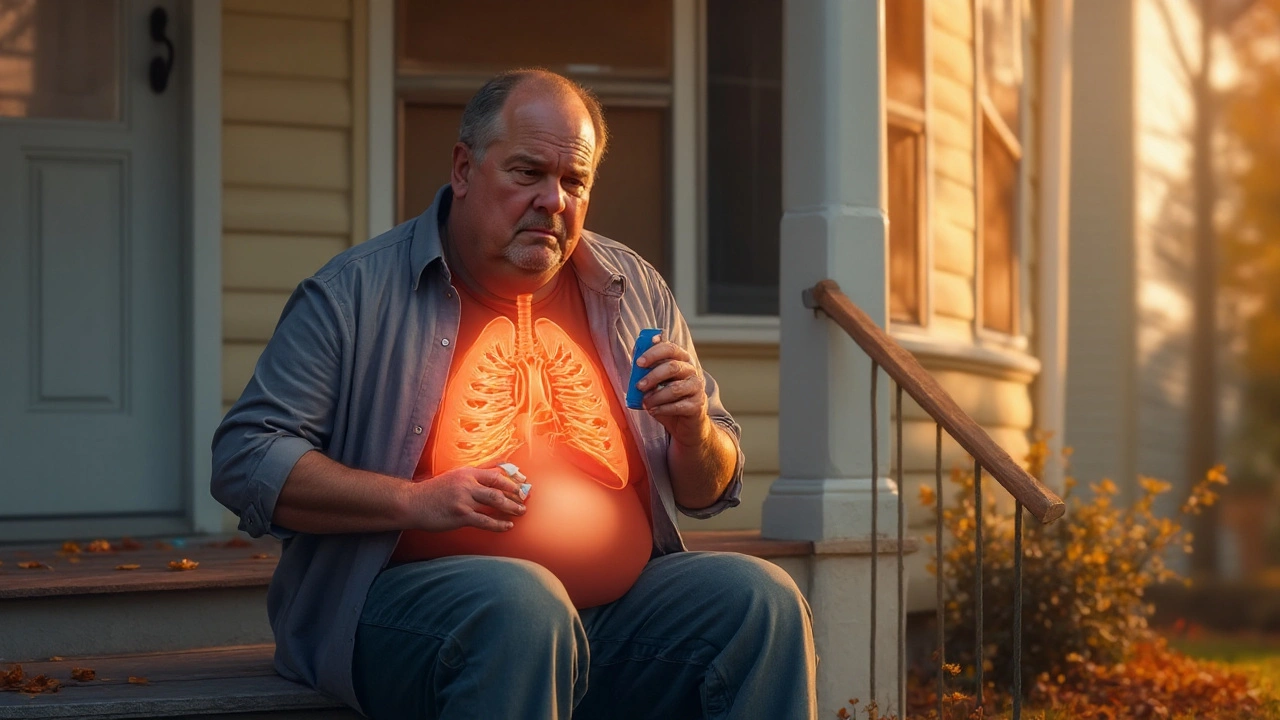
How Obesity Impacts Obstructive Pulmonary Disease (COPD)
Explore how excess weight worsens COPD, from lung mechanics to inflammation, and learn practical strategies for managing obesity‑related respiratory decline.
Pulmonary hypertension (PH) is a type of high blood pressure that hits the arteries in your lungs. When those vessels get tighter, the heart has to work harder to push blood through. Over time, the right side of the heart can get weak, leading to breathlessness, fatigue, and even heart failure if you don’t act.
PH isn’t a single disease but a group of conditions that raise pressure in the lung’s arteries. Doctors usually split it into five groups based on cause. The most common is Group 1, called pulmonary arterial hypertension (PAH), which can be idiopathic (no clear reason) or linked to genetics, drugs, or other health issues.
Typical signs show up slowly. You might notice you get winded climbing stairs, feel tired after short walks, or hear a faint “whoosh” sound when you breathe in (that’s a heart murmur). Some people also get chest pain, dizziness, or swelling in the ankles.
Risk factors differ by group. Family history, connective‑tissue diseases like scleroderma, HIV infection, or chronic lung problems such as COPD can all raise your chances. Even living at high altitude for a long time can push pressure up.
The first step is getting a proper diagnosis. Doctors use an echocardiogram, blood tests, and a right‑heart catheter to measure pressure directly. Once PH is confirmed, treatment focuses on three goals: lower pressure in the lungs, improve how well the heart works, and boost your quality of life.
Medications are the mainstay. Some work by relaxing the blood vessels—these include phosphodiesterase‑5 inhibitors (like sildenafil) and endothelin receptor antagonists (like bosentan). Prostacyclin analogs help dilate vessels and prevent clotting. Your doctor will pick a combo that matches your PH group and severity.
Lifestyle tweaks also matter. Staying active with low‑impact exercises, like walking or cycling, can keep your heart strong. A low‑salt diet helps control fluid buildup, and quitting smoking removes a big irritant from your lungs.
In advanced cases, procedures like balloon atrial septostomy or lung transplantation may be options. Those are usually last‑resort measures after meds and rehab have been tried.
Regular follow‑ups are key. Your doctor will check blood pressure, repeat imaging, and adjust meds as needed. Keeping a symptom diary—note when you feel short‑of‑breath or notice swelling—helps you catch changes early.
Bottom line: pulmonary hypertension is serious, but with the right mix of diagnosis, medication, and healthy habits, many people stay active and avoid major complications. If you spot any of the warning signs, talk to your healthcare provider right away. Early action can make a big difference in how your heart and lungs cope over the long run.

Explore how excess weight worsens COPD, from lung mechanics to inflammation, and learn practical strategies for managing obesity‑related respiratory decline.